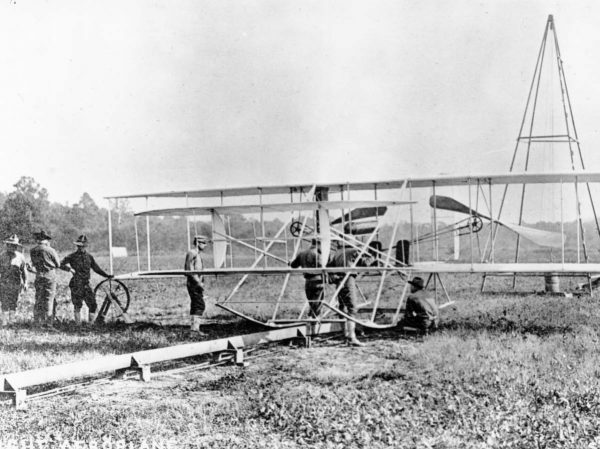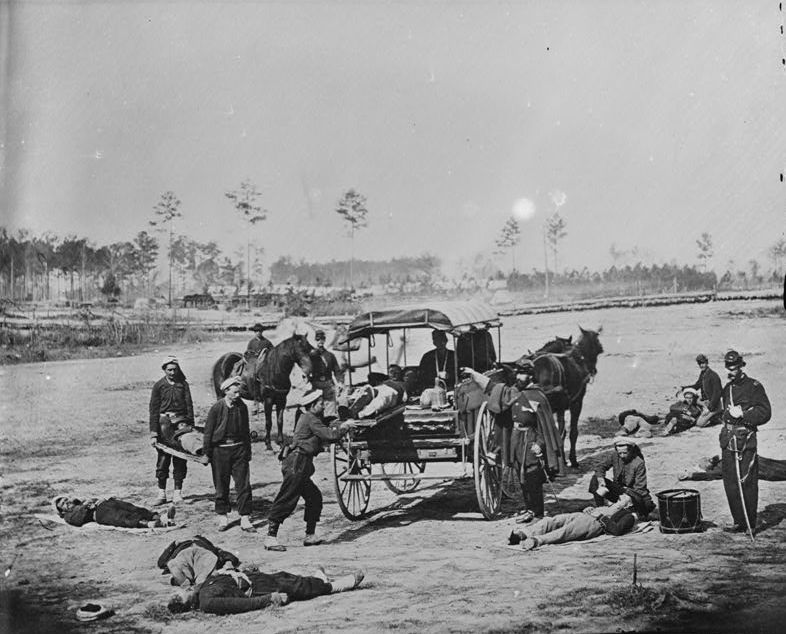August 2 in U.S. military history
1776: Although the Continental Congress voted to establish “the thirteen united [sic] States of America” on July 2 and adopted Thomas Jefferson’s draft of the Declaration of Independence two days later, congressional delegates sign the Declaration on this date. The most famous inscription belongs to John Hancock, the president of Congress, who is said to have declared, “There, I guess King George will be able to read that without his spectacles,” after adding his rather substantial signature.
1862: The brass approves the plan by Maj. Jonathan Letterman, Medical Director for the Army of the Potomac, to establish an ambulance corps (featured image). Letterman is considered the “Father of Battlefield Medicine” for revolutionizing the way casualties are handled; soldiers now had first aid stations at the regimental level where they could be treated and triaged. Those more seriously wounded could be sent – by ambulance – to field hospitals at the division and corps level.
During the Peninsula Campaign, one out of every three Army of the Potomac casualties would die prior to implementing Letterman’s system. But after, just 2 percent of soldiers wounded Battle of Gettysburg died.
1909: After a successful demonstration for the military by Orville Wright, the Army Signal Corps purchases a Wright Flyer for $30,000 (the equivalent of $800,000 today). The two-seat “Signal Corps Airplane No. 1” will train America’s first military pilots at College Park, Md. and Fort Sam Houston in San Antonio over the next two years – crashing several times – before it’s retirement. Today, the legendary aircraft hangs in the Smithsonian Institution’s National Air and Space Museum.

1934: Upon the death of German president Paul von Hindenberg, Chancellor Adolf Hitler begins his “thousand-year Reich,” assuming full dictatorial powers as Reichsführer. Also on this date, Hitler changes the military oath so that the Wehrmacht swears allegiance to him instead of Germany.
1944: Convoy HX 300, the largest convoy of World War II, safely crosses the Atlantic, bringing over 1 million tons of supplies to ports in the United Kingdom. 32 escort vessels protected the 155 cargo ships, and the formation spanned nine miles across and four miles long. Not a single ship was attacked by a German submarine.
1950: As the North Korean Army bears down on the American and UN forces occupying the southern tip of the Korean Peninsula, the 1st Provisional Marine Brigade lands at Pusan and mans the Pusan Perimeter’s left flank.
1964: The destroyer USS Maddox (DD-731), supporting South Vietnamese covert operations against the North in the Gulf of Tonkin, is attacked by three North Vietnamese torpedo boats in the Gulf of Tonkin. Within days, Congress would pass the Gulf of Tonkin Resolution, paving the way for full-scale conflict in Vietnam.
1990: At 2 a.m., several divisions of the Iraqi military’s elite Republican Guards pour across the border into Kuwait, beginning a seven-month occupation of the neighboring state. The United States will lead a 35-nation coalition to liberate Kuwait in January.
